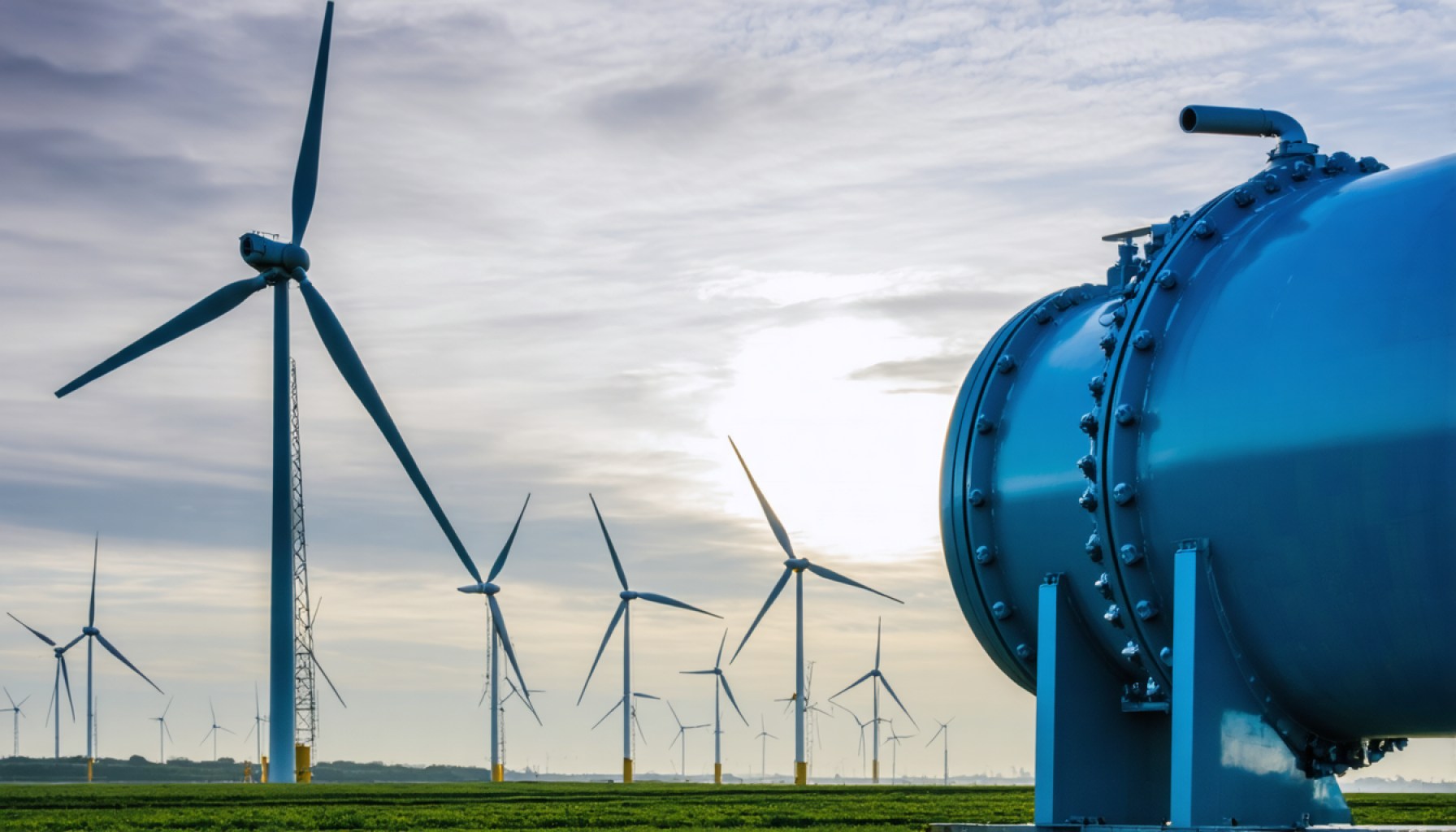- The UK is envisioning a shift to hydrogen energy, utilizing its abundant wind resources with advanced wind turbines and electrolysers.
- Both onshore and offshore wind projects are key, with an urgent need to upgrade the national grid to support and stabilize these technologies.
- Time-sensitive projects like HAR1 and HAR2 are crucial to the success of decarbonizing the UK’s energy supply, needing precise support mechanisms.
- Regions like Cumbria and Northumberland have significant potential for hydrogen production, though logistical challenges persist in connecting production sites with demand centers.
- The strategy promotes a comprehensive plan for a sustainable energy future, transforming the UK’s approach to energy policy and planning.
Across the windswept landscapes of the UK, a revolution brews. Picture towering wind turbines harnessing nature’s breath, paired seamlessly with cutting-edge electrolysers, to birth the energy carrier of the future: hydrogen. A groundbreaking study illuminates this ambitious vision, revealing a roadmap that crisscrosses the nation from the rugged Scottish Highlands to the tranquil valleys of central Wales.
Unleashing Potential: The vast potential of onshore and offshore wind beckons, poised to reshape the UK’s energy landscape. With a focus on both fixed and floating turbines, the study urges simultaneous exploration to amplify opportunities. Yet, as these colossal projects embark on their journey, the unsung hero in this tale might be the often-overlooked grid. The backbone of this electric saga demands urgent upgrades to support and stabilize the integration of wind and hydrogen technologies.
A Race Against Time: The clock ticks for projects like HAR1 and HAR2, which stand at a critical juncture. Their success or failure could spell fortune or folly for an emerging industry that holds the key to decarbonizing the UK’s energy supply. Support mechanisms, designed with precision and care, are vital to shepherd these initiatives to fruition.
Amidst areas like Cumbria and Northumberland, where population density yields to sweeping vistas, the potential for hydrogen production shines brightest. Yet, a challenge looms—bridging the gap between places of surplus production and centers of high demand. It’s a dance between supply and demand, demanding meticulous planning and robust infrastructure.
This holistic vision creates a new narrative for UK’s energy policy and planning. A pioneering blueprint for a cleaner, brighter future fueled by the winds of change.
The Wind-Hydrogen Revolution: Transforming UK’s Energy Future
Key Features and Specifications
The UK’s transition to wind-powered hydrogen involves integrating renewable energy sources with hydrogen production, storage, and distribution systems. The utilization of both onshore and offshore wind turbines is crucial. Floating turbines, particularly offshore, can access stronger winds and are less affected by land-use constraints.
1. Wind Turbines: UK’s wind farms are equipped with fixed and floating turbines. Offshore turbines are larger and more powerful, generating more electricity.
2. Electrolysers: Devices that split water into hydrogen and oxygen using electricity from wind power. This “green hydrogen” is carbon-free, providing a clean energy source.
3. Grid Infrastructure: Upgrades are necessary to handle intermittent wind energy and hydrogen distribution to maintain reliability.
Real-World Use Cases
– Powering Industry: Hydrogen can fuel heavy industries, reducing reliance on fossil fuels.
– Transportation Sector: Hydrogen-powered vehicles and public transport systems offer a zero-emission alternative.
– Heating: Hydrogen can be used for domestic heating, playing a role in lowering carbon emissions from residential sectors.
Market Forecast and Industry Trends
The global hydrogen market is projected to grow significantly, with Europe leading the charge due to its focus on renewable energy. The UK’s commitment to decarbonization through hydrogen is expected to attract substantial investments, potentially creating thousands of jobs.
Controversies and Limitations
– Cost: The production of green hydrogen is currently expensive, with costs anticipated to decrease only as technology improves and scales up.
– Infrastructure Challenges: Significant investment in storage and distribution infrastructure is necessary, alongside grid enhancements.
Security and Sustainability
– Energy Security: Diversifying energy sources with renewables bolsters the UK’s energy security.
– Environmental Impact: Hydrogen production through renewables reduces carbon footprint but requires careful management of water resources and ecological impacts of offshore wind developments.
Insights and Predictions
The UK is on track to become a global leader in marine energy and hydrogen. By integrating these technologies, the UK can potentially achieve its target of net-zero carbon emissions by 2050.
Pros and Cons Overview
Pros
– Reduction in greenhouse gas emissions.
– Enhancement of energy security.
– Job creation in new energy sectors.
Cons
– High initial costs.
– Infrastructure and technical challenges.
– Environmental concerns with large-scale installations.
Actionable Recommendations
– Policy and Support: Government incentives and policies should encourage innovation and investment in wind energy and hydrogen production.
– Public Awareness and Education: Increasing public understanding of hydrogen’s potential benefits will support market adoption.
– Pilot Projects: Implementing small-scale pilot projects can help test and refine technologies, identify best practices, and inform larger-scale deployment.
For more insights into UK energy advancements, visit the UK Government’s energy policy page. By embracing wind-hydrogen synergy, the UK can steer towards a sustainable and independent energy future.


